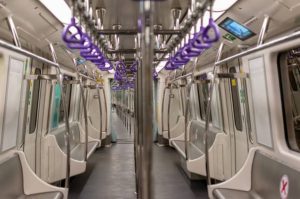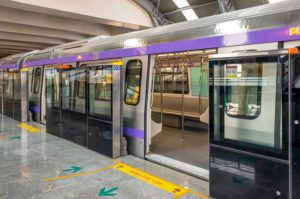Historic Leap: Kolkata is witnessing a defining moment in its urban transit history with the unveiling of three brand-new Metro lines designed to transform the way the city moves. These lines are expected to slash travel time, improve access to the airport, and reduce dependence on traditional road transport that often suffers due to congestion. For the city’s 30 lakh daily commuters, this expansion is not just about better transport—it represents a shift towards efficiency, comfort, and emotional relief from long hours stuck in traffic.

The highlight of the expansion is the direct airport connection, which will now allow passengers to reach Netaji Subhas Chandra Bose International Airport in just 30 minutes from central and southern parts of the city. Earlier, this same journey could take up to 90 minutes due to bottlenecks along VIP Road and EM Bypass. This single development is being hailed as a game-changer for both residents and travelers. Metro authorities believe this will significantly reduce pressure on Kolkata’s overcrowded roads, leading to fewer traffic snarls and reduced pollution levels.
Urban planners and transport experts have described this phase as one of the biggest infrastructure milestones in Kolkata since the city first introduced its Metro services in 1984. With 14 km of new tracks added in this phase and more on the horizon, the expansion is being celebrated as not just an infrastructural upgrade but also as a symbol of Kolkata’s resilience, ambition, and determination to modernize while preserving its cultural ethos.
Airport in Half an Hour: The Bold Promise of Kolkata’s Metro
The most talked-about feature of this Metro expansion is undoubtedly the airport connectivity. For years, one of the biggest complaints from Kolkatans was the difficulty of reaching the airport quickly, particularly during peak hours when traffic could bring journeys to a standstill. Now, with direct connectivity from Shahid Khudiram Metro station and other major hubs, airport travel is set to become seamless. The emotional impact of this change cannot be underestimated—families catching flights, business travelers racing against time, and international visitors arriving in the city will all benefit from a smooth and predictable commute.


Economists and urban analysts predict that this connectivity will boost Kolkata’s economy by facilitating faster business travel, improving logistics, and making the city more attractive for investment. With better connections between the airport and business districts, Kolkata can position itself more strongly as an eastern hub for commerce, tourism, and trade. Additionally, improved airport access is likely to enhance the city’s image as a global metropolis capable of providing world-class infrastructure to match its cultural richness.
Historic Leap: The Social and Environmental Impact
The new Metro lines are more than just transportation upgrades; they also represent a push towards sustainable urban living. Reduced car dependency is expected to bring down vehicular emissions, leading to cleaner air and healthier living conditions for residents. This change is especially significant for Kolkata, which often struggles with pollution levels during peak traffic hours. The emotional relief of shorter commutes combined with better air quality creates a dual victory for the people.


At the social level, these lines promise to bridge gaps between neighborhoods that previously felt disconnected from the city’s mainstream. By linking peripheral regions to central hubs, the Metro ensures that economic opportunities, healthcare, and education facilities are more accessible. The psychological comfort of knowing one can travel quickly and affordably across the city is as important as the physical convenience itself.
🔗 External References
- Kolkata Metro Rail Corporation
- Ministry of Railways – Metro Projects
- Urban Transport Infrastructure in India
Also read: Home | Channel 6 Network – Latest News, Breaking Updates: Politics, Business, Tech & More

